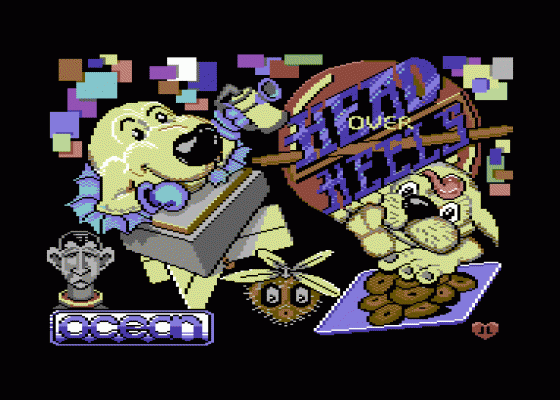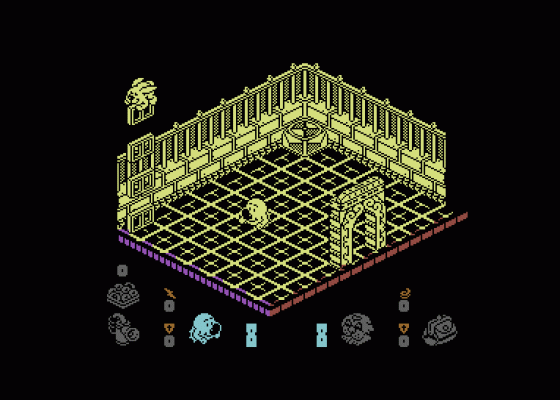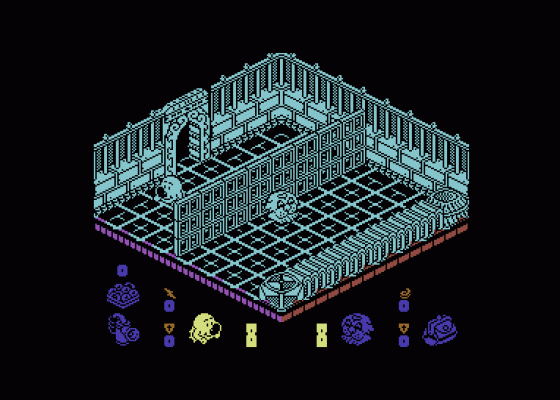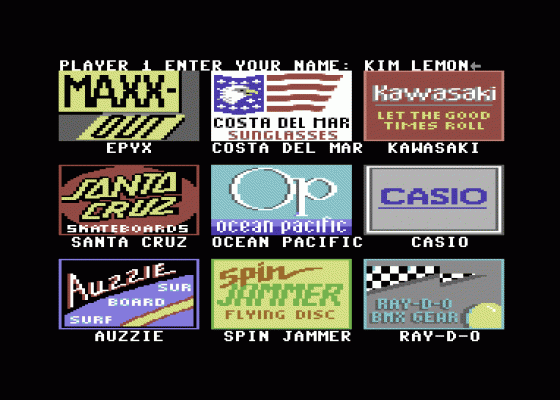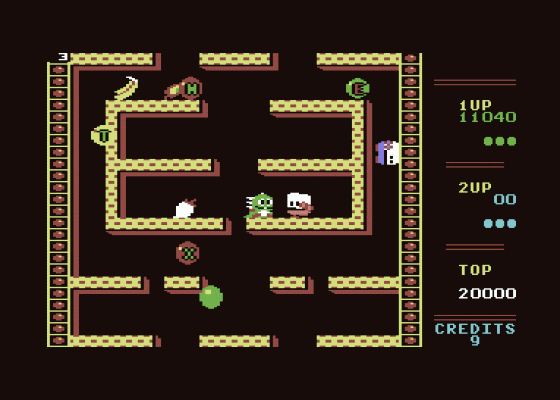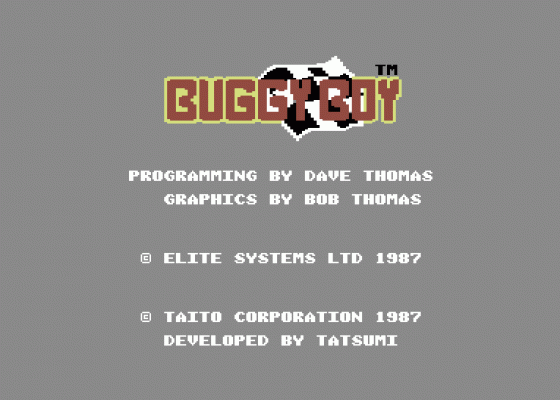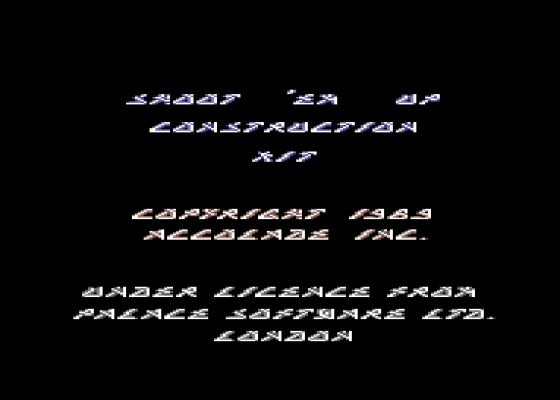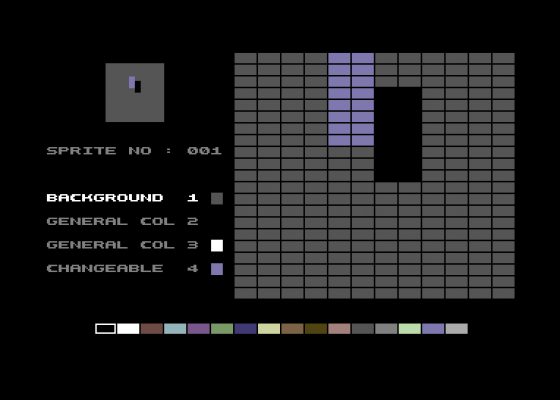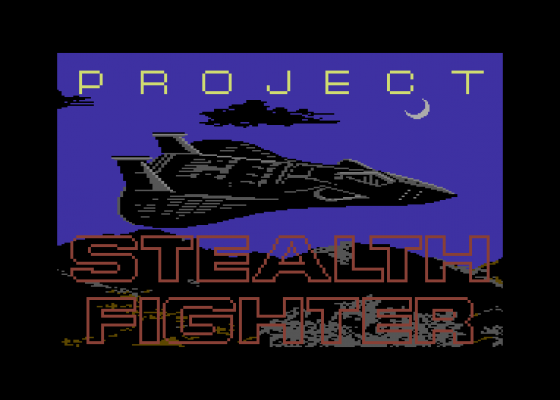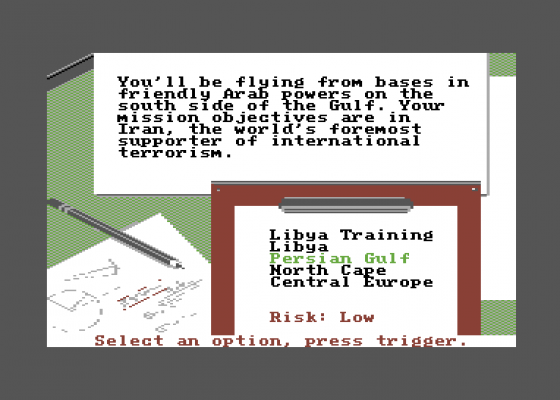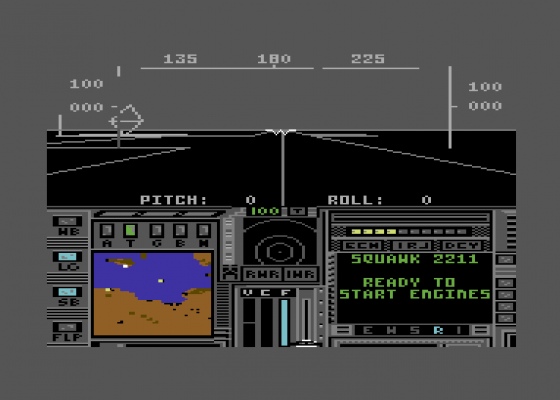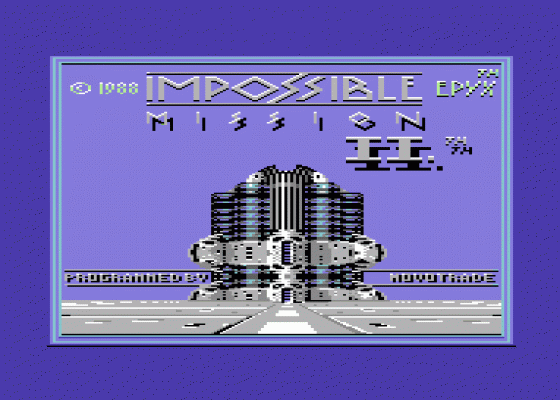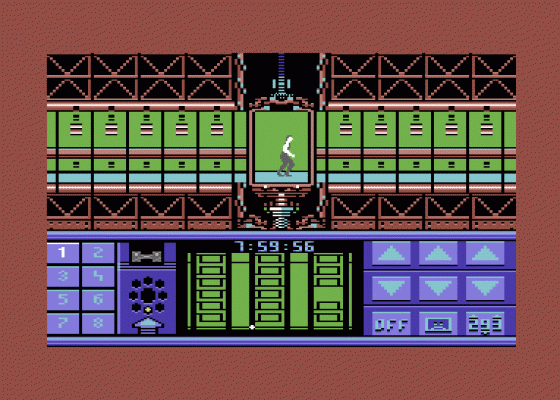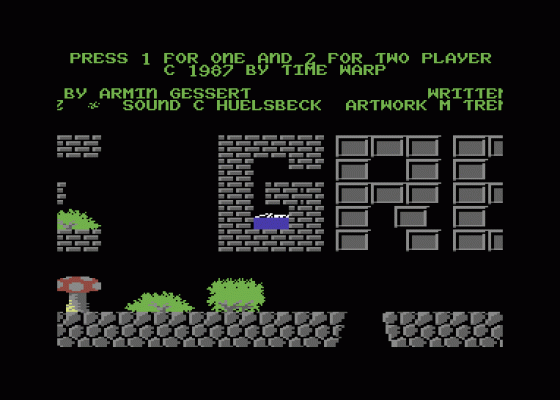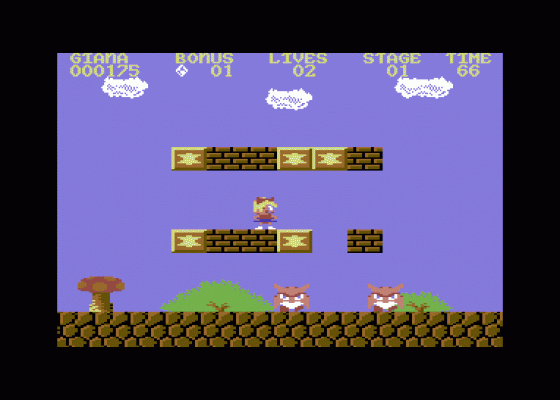Zzapback 21-39
Continuing from where he left off in last year's 2018 ZZAP! 64 Annual, Julian 'Jaz' Rignall digs issues 21-39 out of his closet and takes an in-depth look at all the games that earned Gold Medal reviews. Were these titles truly deserving of their sky-high scores or were we simply caught up in their hype? Jaz reveals these top-rated releases at the time, and then examines how they look and play all these years later...
Head Over Heels (Ocean, Issue 28, 98%)
When I first started researching the Gold Medal games for this feature, I began with issue 21. However, no Gold Medals were awarded to any games that month, so I moved onto issue 22... and you can see where this is going, because Head Over Heels was reviewed in issue 28! Yep. We went right the way through the first half of 1987 without awarding a single Gold Medal to a game. Indeed, it wasn't until the August edition of ZZAP! that a title finally came along that really deserved the coveted award.
It's not like there weren't any decent games released during that period - we dished out plenty of Sizzler awards to gammes such as Gauntlet, Gunship and Wizball - but none were quite good enough to earn themselves Gold Medal status. But that changed when we received Head Over Heels. The creation of programmer Jon Ritman and artist Bernie Drummond, this isometric 3D game has you controlling two unique characers, the eponymous Head and Heels. Both have their own special abilities that must be used as they wend their way through the 100-screen game in search of a set of stolen crowns. Initially, Head and Heels follow separate routes, but at a certain point the pair join together - literally - and can use their combined powers to solve the game's many puzzles and challenges.
Needless to say, the ZZAP! team absolutely loved ths game. "From the very first go this had me hooked - and a fortnight later I'm still itching to get back to it," said I, while Steve Jarratt commented. "The graphics are extremely prety, and the feeling of actually existing in three-dimensions within the game is overwhelming."
Looking at it today, I think Head Over Heels is an absolute classic that has lost none of its considerable charm and appeal over the years. Sure, it's very challenging and packs some really devious puzzles, but it nevertheless presents a terrific, surreal world to explore that is paced full of neat graphical touches. If you want to experience one of the finest and most enjoyable isometric 3D games ever made, definitely check it out.
California Games (Epyx, Issue 29, 97%)
As huge fans of Epyx Games' titles, a new release in the series was always cause for celebration at ZZAP! Towers. And rightly so, because programs such as Summer Games I and II, Winer Games and World Games are among the most compelling and fun sports games ever released for the Commodore 64.
So it's no surprise then that we were very excited when California Games arrived for review in the summer of 1987. The game's six events - surfing, half-pipe skateboarding, flying disk (aka Frisbee), roller skating, BMX racing and foot bag juggling - had a distinctly West Coast feel, and all were excellent fun to play.
"Sometimes I hate Epyx," I mused. "They produce something seemingly unsurpassable like World Games, and you use every superlative in the book to sum up its brilliance. Then, a year later, they release California Games, to boldly go where no-one has gone before... and product something even better!"

Steve Jarratt echoed my sentiments, noting that, "If you gather up all the superlatives from previous Epyx reviews and add them together, you just might get halfway towards describing California Games."
Graphically, the game is really impressive, using beautifully animated sprites and highly detailed backdrops to convey its action. But it's the gameplay that really shines. California Games' six events are all distinct and unique from one another, and they are all thoroughly enjoyable to play, requiring plenty of practice to get good at them, and even more perseverance to garner high marks in each one. That helped give the game huge lasting appeal that ensures to this day.
California Games is one of the best of the Epyx games series in my book, and one of the finest Commodore 64 sports games around. If you haven't played it before, you really owe it to yourself to check it out.
Bubble Bobble (Firebird, Issue 29, 97%)
I remember first encountering this utter classic in May of 1987 at Ludlow's local traveling fair. In among the usual array of rides and dodgems was a little arcade booth that had a couple of relatively new coin-ops such as Gauntlet and Ghouls 'N Ghosts. But it was this game, Bubble Bobble, that really grabbed my attention. Featuring one of the most joyous earworm tunes of all time - once you've heard it, it'll be with you always - fantastic bubble-blowing platforming action and really appealing characters, I was hooked on Bubble Bobble as soon as I started playing it.
However, I was a little sceptical about the Commodore 64 version, noting that "Bubble Bobble is one of my favourite arcade games at the moment, and I must confess to waiting for this conversion with some trepidation. After all, there have been so many disappointments lately, with pale, bastardised imitations of original arcade games being the usual result of a conversion." However, Bubble Bobble was far from that, and I exclaimed, "Imagine my surprise when Firebird's conversion turns out to be one of the finest yet seen on the Commodore. All the features of the 100-screen arcade game have been included, and the graphics, music and gameplay are about as close as you're ever going to get."
Steve Jarratt was also a big fan of the game, and summed it up succinctly. "This has got to be one of the best platform games of all time... if not the best!"
Strong words, but I think Steve had a point. Bubble Bobble is one of the all-time greatest platform coin-ops, and this conversion really captures its essence. And yes, while you can easily play the original on MAME these days, this Commodore 64 conversion has lost none of its appeal. It's still a remarkable achievement, and one of the finest arcade ports available on the system.
Buggy Boy (Elite, Issue 32, 97%)
Another arcade conversion that proved very popular with the ZZAP! team was Elite's port of Tatsumi's 1985 coin-op, Buggy Boy. While Elite had produced some fairly run-of-the-mill conversions in the form of Bomb Jack and Paperboy, Buggy Boy was anything but. Capturing the essence of the relatively obscure coin-op, Buggy Boy was a thoroughly enjoyable racing game that had stunning 3D graphics and a truly excellent feel thanks to its terrific controls.
"It's rare that a computer racing game manages to give a real feeling of thrill and exhilaration, but Buggy Boy manages it," said I, noting that, "The graphics are absolutely superb - I've never seen such a smooth and realistic 3D effect, and the "feel" of the control method is tremendous."
Steve Jarratt also lauded the game, stating, "The buggy is very responsive and goes exactly where you want it to, creating a perfect feeling of involvement: you get totally wrapped up in the proceedings."
High praise indeed, but then Buggy Boy really is a great racing game. While it doesn't have the giant sprites of the original coin-op, it nevertheless captures its feel with really fun and enjoyable point-to-point racing action. At the risk of repeating myself (and indeed Steve), it has absolutely superb controls that make it one of the all-time classic Commodore 64 racers. If you've not played it before, I think it's definitely worth checking out. While its 3D effect chugs a little in the cold light of the modern era, Buggy Boy is still tremendous fun to play.
Shoot-'Em-Up Construction Kit (Outlaw, Issue 32)
One of the great things about the Commodore 64 micro was the sheer diversity of its software. From arcade games through adventures to music programs and utilities, the Commodore 64 featured an astonishing range of software. And few were more original and fun to play with than Sensible Software' Shoot 'Em Up Construction Kit. Using this cleverly conceived utility, players with the time and inclination could design and create their very own shooters. A quite astonishing achievement for a program that was released well over three decades ago.
Although it wasn't really a game, and we didn't actually give it an overall score, we nevertheless thought Shoot-'Em-Up Construction Kit deserved a Gold Medal when we reviewed it.
"Sensible Software have certainly come up with something special this time," said I. "If you've got the time and patience, you can use the Shoot-'Em-Up Construction Kit to create some really incredible games."
Steve Jarratt also piled on the praise, saying, "OK, it isn't the first, but it's certainly the best executed and most comprehensive (non-adventure) game designer to date. I couldn't believe how quickly and easily a simple game could be created. The whole package is brilliantly designed and so pleasant to use."
It's difficult to maintain the same level of excitement for Shoot-'Em-Up Construction Kit today that we had for it back in December of 1987. Yes, it's a very clever, pioneering program that did enable budding designers to make simple shoot-'em-up games (we were sent quite a few through the mail from readers hoping that we'd enjoy playing their creations), but these days it just feels a little clunky and impenetrable. It was certainly remarkable for its era, but ultimately Shoot-'Em-Up Construction Kit has aged badly.
Nebulus (Hewson, Issue 32, 97%)
December 1987 was certainly an excellent month for software. As well as Buggy Boy and Shoot-'Em-Up Construction Kit having Gold Medals bestowed on them, Hewson's Nebulus also earned the ultimate ZZAP! review award. I remember first seeing it at the PCW Show at Hewson's booth and being absolutely blown away by the game's 3D effect. The way that the towers rotate as you try to ascend them is absolutely fantastic.
"There's no doubt about it. Nebulus is sheer inspiration - it's completely original and beautifully designed, and I deny anyone to play it and keep their cool. Not since Boulderdash has a game been so playable and frustrating," said I before going on to say, "The 3D rotational effect is absolutely amazing, and the main sprite is superbly animated. Even the sound effects are good. Nebulus is a wonderful combination of platform action and mind-bending puzzles, and offers days of solid play. Buy it at your peril!"
Steve was similarly effusive. "Graphically, Nebulus is flawless. Watch the rotating towers from a couple of feet away and I challenge anyone not to be totally convinced. If this isn't enough, the parallax scrolling in the bonus section is equally incredible. The gameplay hasn't been neglected either; the word 'addictive' fails to amply convey the lure that Nebulus holds."
Playing Nebulus today, I'd forgotten just how challenging it is. You really need to have your wits about you as you make precision jump after precision jump to slowly work your way to the top of each tower without falling foul of the myriad of hazards. However, if you pay attention, it's possible to make progress one step at a time even though the going sometimes feels like attrition. But despite Nebulus being somewhat frustrating to play, I still found it a lot of fun. The game looks outstanding, and has ultimately lost none of its considerable charm.
Project Stealth Fighter (Microprose, Issue 34, 96%)
We really, really loved our flight simulators back in the day. Especially the ones from Microprose, which often felt like really sophisticated shoot-'em-ups. That was definitely true of Project Stealth Fighter, which put players in the cockpit of a top secret Lockheed F-19 fighter jet and sent him on a series of cold war missions that took him deep into enemy territory.
New reviewer Paul Glancey was highly enthusiastic, saying, "What should I say first about Project Stealth Fighter? Should I tell you about the superlative quality of the graphics? The incredible playability perhaps? No. I'll tell you about the incredible - or should I say very credible - atmosphere which the whole package exudes, because that's what makes this simulation something really special."
Steve continued to pile on the praise, noting, "MIcroprose's latest simulation follows closely in the vapour trail of Gunship, but still manages to improve on the gameplay and graphics, providing a tense and atmospheric stage on which to act out your airborne ambitions. The presentation is of the same high standard, with all the trappings of its predecessor and enough technical documentation to keep any statistic freak happy.
I remember that documentation well. Microprose's robust game boxes were always laden with all sorts of interesting manuals, literature and even keyboard overlays that helped bring their games to life. That's something I miss with today's downloaded digital games!
Going back to the game recently, it certainly isn't quite what I remembered. With a rather chugging frame rate, and basic vector graphics, Project Stealth Fighter doesn't feel like the cutting edge flight simulator it once was. Indeed, it feels clunky and difficult to fathom - especially without a manual to tell you its many important key commands. But then this is true of many of the flight combat games from the mid-1980s. It's a genre of game that has unfortunately aged badly.
Impossible Mission II (US Gold/Epyx, Issue 38, 96%)
The original Impossible Mission is one of my all-time favourite Commodore 64 releases. I remember playing it when I first started at ZZAP! magazine and getting so good at the game that I could finish it with huge amounts of time remaining. Needless to say, when the sequel arrived at the ZZAP! offices almost three years after the original's releaase, I was incredibly excited.
"Following up one of the greatest ever computer games is a very difficult thing, but Epyx have managed to provude a worthy sequel," said I. "The gameplay is fundamentally the same as the original, with Agent 4125 negotiating a platform environment, but there are many new twists. Elvin's lair is split into either towers of increasing difficulty, with some very tricky screens to explore." I summed up my review saying, "Impossible Mission II is an incredibly challenging, compelling and addictive game, and I've played it more than I've played anything else in years."
Gordon Houghton wasn't quite so enthusiastic, but was still highly complimentary, noting that, "Even though Impossible Mission II lacks the appealing originality of its predecessor, the graphical improvement and increased depth in gameplay make it brilliantly compelling. " He finished his comment with, "It's a great sequel to a brilliant game, and fully deserves a place in any self-respecting game player's collection."
Playing it again today, Impossible Mission II still holds a lot of magic for me. Fortunately, my muscle memory for this game and the first Impossible Mission is still good, largely thanks to the enormous amount of time I put into both titles back in the day. However, those who haven't played either game before will probably find the going pretty tough. Both this and Impossible Mission are unforgiving, and require a high degree of platforming skills to be able to make progress. However, if you stick with it and manage to crest its difficulty curve, both games really deliver the goods. To me, they're still absolute classics.
The Great Giana Sisters (Go/Rainbow Arts, Issue 39, 96%)
"Greatest platform game of all time?" screamed the somewhat hyperbolic cover line, referring to this unashamed Super Mario Bros. clone. In all reality, it wasn't. But then coverlines were always the original 'clickbait' - highly charged promotional rhetoric written specifically to persuade potential readers to pick up the magazine and hopefully buy it.
Still, even though it's clearly not the greatest platform game of all time, Great Giana Sisters is very good indeed. Which isn't surprising when you consider that it's a very close copy of a game that deffinitely is one of the greatest platform games of all time.
I didn't mince words, noting that, "Great Giana Sisters is a clone of the utterly superb Super Mario Bros., and although it isn't as good as Nintendo's classic, it's still both incredibly addictive and tremendously playable." I continued, "Anyone lucky enough to have Super Mario Bros. won't find this particularly appealing because that game is far more refined, but for those without, Great Giana Sisters offer a fienishly playable platform game that'll have you burning the midnight oil for weeks."
Gordon Houghton hadn't played Super Mario Bros before and opined, "This is one of the most addictive arcade adventures I've ever played - it's amazing. The gameplay is just fabulous: the basic collect-and-shoot action is brilliant in itself with great graphics and a wide range of weapons and extra features to collect, but on top of this there are loads of secrets to be discovered." He summed up his review saying, "It's the best game of its type since Bubble Bobble, and there can't be many higher recommendations than that."
Looking back, I think we overrated this somewhat. It's a quality game, but I don't think it quite deserves to be up there with the all-time Commodore greats because it's ultimately a complete rip-off of another game. That said, it's still fun to play today. It's nowhere near as good as the source material from which it takes its inspiration, but as Commodore 64 platformers go, it's bright, colourful and presents an addictive and enjoyable challenge.
Other Commodore 64/128 Game Reviews By Julian Rignall
Scores
(Commodore 64/128)
(Commodore 64/128)
(Commodore 64/128)
(Commodore 64/128)
(Commodore 64/128)
(Commodore 64/128)
(Commodore 64)
(Commodore 64)
(Commodore 64/128)


 23rd November 2020
23rd November 2020